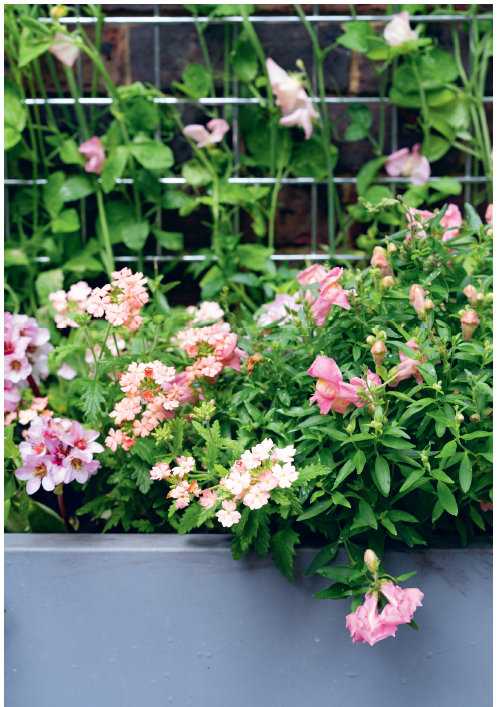
What You Need
Grey metal trough planter, about 70 x 50 x 30 cm (28 x 20 x 12 in)
Metal shop-fitting mesh panel, about 6 m (20 ft) tall and 60 cm (24 in) wide (to support the sweet peas)
2–4 large nails (for fixing the panel)
Electric drill or a hammer and heavy-duty nail (optional)
Drainage crocks
Potting mix
Sweet pea support rings or garden twine, for tying in the sweet peas (optional)
Plants
5 ‘Almond Pink Mrs Boulton’ sweet pea (Lathyrus odoratus)
5 ‘Appleblossom’ snapdragon (Antirrhinum majus)
1 ‘Diamond Light Pink’ diascia (Diascia)
2 ‘Supreme Cantaloupe’ coneflower (Echinacea)
3 orange-pink verbena (Verbena)
Aftercare — When growing sweet peas, keep tying in the new shoots as they clamber over the panel, especially if they are pointing outwards or look as if they may break. Sweet peas do not like to dry out, particularly when they are grown in pots, so ensure the water reaches the roots and water daily in hot, dry weather. Deadhead the sweet peas as often as possible. This is important for the annual ‘Almond Pink Mrs Boulton’, which will cease flowering if seedpods are allowed to develop.
Tips — If you love the scent of sweet peas, and want to try different varieties, be sure to choose annual ones because they have a stronger fragrance than their perennial cousins. The more you pick sweet peas, the more they grow. So, cut some as flowers for a vase and enjoy their gorgeous fragrance indoors, too.